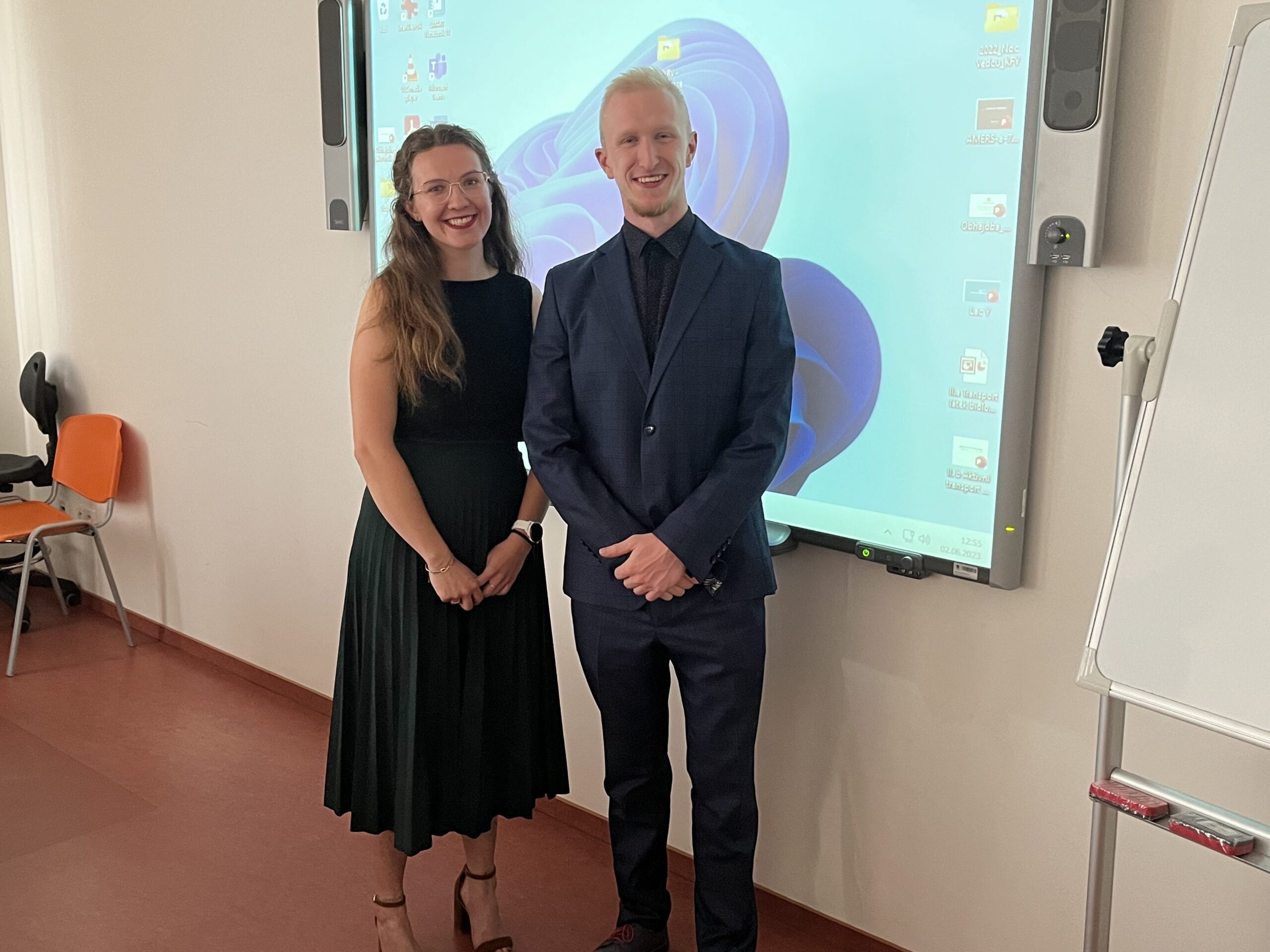Karolína Tkáčova and Jiří Kalmár defended their master theses, congratulation!
Karolína’s Thesis
Topic: The effect of surface terminations on the properties and reactivity of 2D transitional metal carbides
Abstract: Vanadium carbides (V2CTx) are relatively poorly explored 2D materials. Due to the
promising properties of vanadium in Mxenes, we performed calculations of cohesion
energies, BDE (bond dissociation energy), dissociation energy, work function, band
structure and charge analysis with different terminal groups (F, O, OH), which
can usualy be found on the surface of MXenes. We found that the most preferred
conformation in which these Mxenes are found isone where the terminal groups
are located above the cavity formed by the neighboring carbon atoms. In this
conformation, most of our structures (with O2, OH2, FO and OOH terminal groups)
have larger BDE values (the largest value is V2COH2: -9.55 eV, on the other end,
the smallest value was -8.10 eV for V2CF2), indicating that the terminal groups are
more tightly bound in this conformation. Similar trends were also observed for the
dissociation energies. Minimal structural changes occurred during relaxation after
introduction of the defect. The analysis of band structures showed that vacancies do
not change the MXenes metalic character. The values of the work function were in
good agreement with the values reported in the literature. Charge analysis showed
that the increasing cell size, decrease the electrophilicity of the vacancy, and the
effect of the vacancy is not transferred to the other side of Mxen due to the carbon
acting t acts as a barrier here.
Jiří’s Thesis
Topic: Optical absorption in various 2D transition metal carbide phases
Abstract: In this Master’s thesis we used many-body methods GW and Bethe-Salpeter equation (BSE) to investigate the optical properties of a growing 2D family of materials’ member, MXene Mn2CO2. Geometrical and spin conformations of this MXene were tested using the specific meta-GGA density functional to identify the antiferromagnetic (AFM) ground state. On this ground-state conformation, a careful convergence of properties to GW+BSE technical parameters was conducted to obtain precise results. From the final calculation, the estimated direct and indirect fundamental gaps of Mn2CO2 are 2.4 eV and 2 eV, respectively. The first exciton binding energy amounts to 1 eV. Optical absorption spectra of Mn2CO2 show high absorbance of 5-20% in the visible 1.5-3 eV range. Overall, this study provides valuable insights into the optical properties of 2D MXene Mn2CO2, which can pave the way for its potential applications in various fields.

